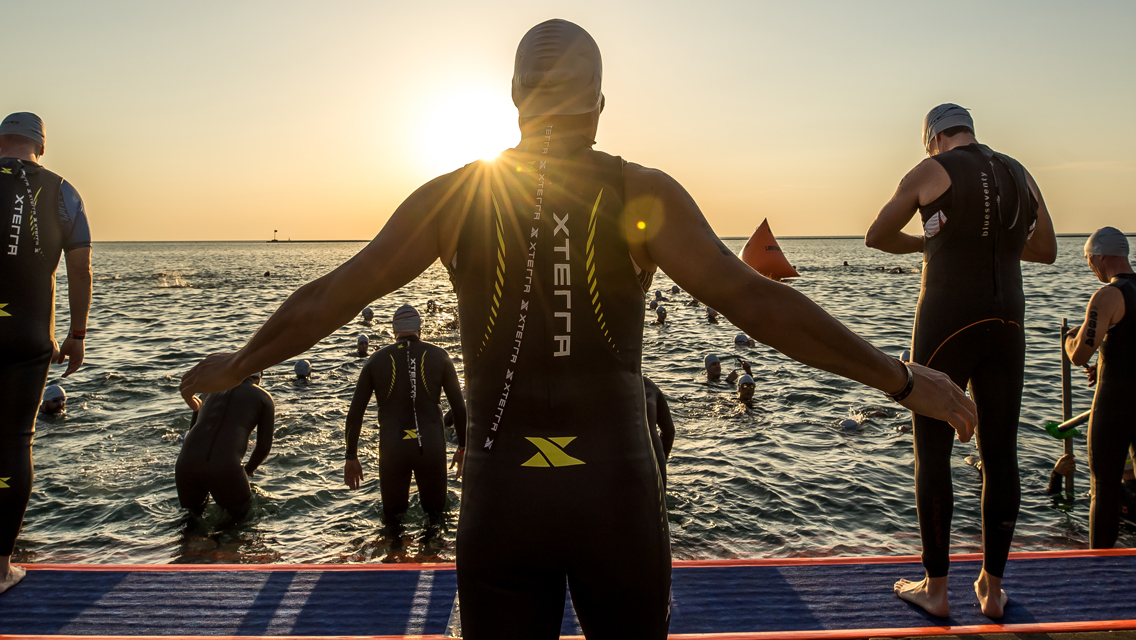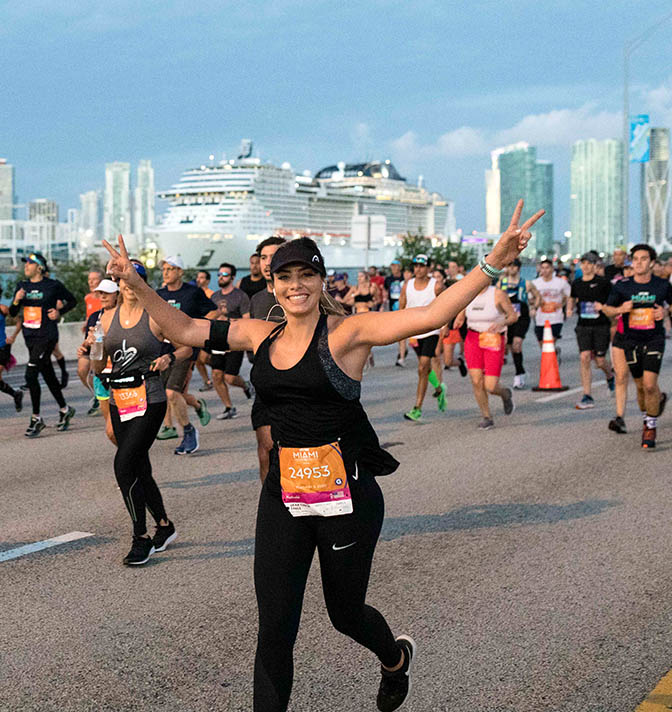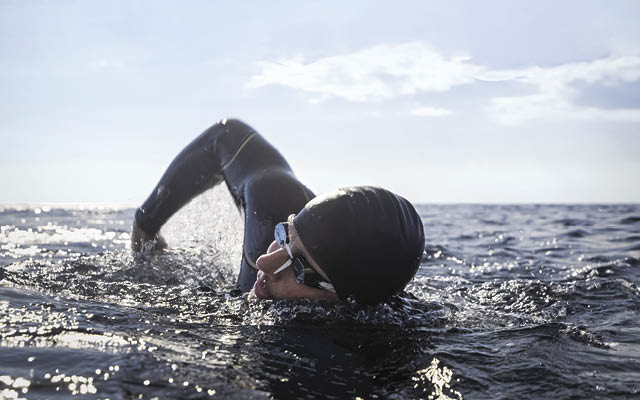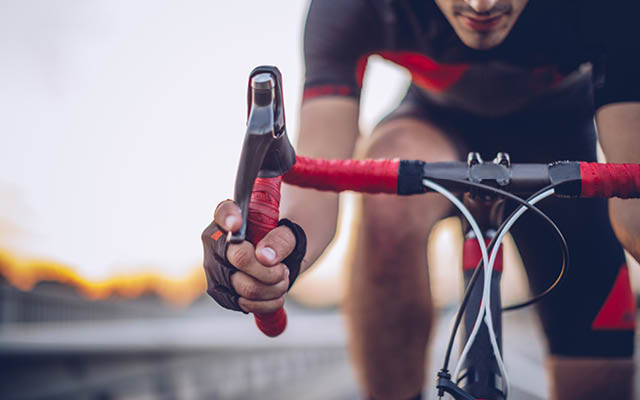At the start of the trials for the 2000 U.S. Olympic triathlon team in Sydney, Australia, Siri Lindley had everything going for her. She was ranked as the No. 2 American and everyone expected her to finish in the top three in the trials and make the team. Lindley had a plan: Stay with the fastest pack of swimmers in order to be with the first group of cyclists. That would put her in a good position for the run, her strongest event.
“I had visualized for months the exact swim I hoped for – being in the pack, being relentless and coming out in a great position,” Lindley says. But when the gun went off, nothing worked as planned. She dove in and was trampled, then was separated from the front group of swimmers by a slower pack.
“I tried to keep swimming, get my rhythm back and get in there, but I just could not regain contact,” she remembers. Lindley finished the leg without the benefit of drafting off the fastest swimmers. She got out of the water behind her main competitors and, perhaps more important, her goal pace.
Getting knocked around by the other swimmers set Lindley back physically, and becoming detached from the lead group took a psychological toll as well. “Because the scene was so different from what I had been visualizing day after day, I panicked and choked. It was one of the worst days of my career,” Lindley recalls. She ultimately dropped out of the race but qualified as the team alternate in a subsequent trials event.
Change of Plans
What happened to Lindley happens to all athletes on a regular basis (but isn’t it nice to know it happens to the best?). It’s called getting dropped – somehow, you become separated from a group during an event or training session. Sometimes, as with Lindley, the separation has nothing to do with fitness: Perhaps a flat tire, an untied shoe or just being late separates a cyclist or runner from the group. Other times it boils down to not being able to maintain the group’s pace.
Whatever the cause, the dropped athlete suffers. Especially in cycling and swimming, traveling alone is harder than being part of a group. In those sports, a pack can move faster than one athlete – members of the group can take turns drafting, saving energy and maintaining a pace as others bear the brunt of wind or water resistance. But the benefit is also a psychological one. In a group, athletes share the burden of setting and maintaining a pace; the sound of footfalls and breathing and the visual cues of arms and legs pumping help each individual excel. There’s also a sense of responsibility to the others and a feeling of camaraderie.
Perhaps the worst part, though, is when the dropped athlete is left alone, wondering whether he or she is worthy of the group’s company.
I’ve been dropped in every sport I practice. At the moment when the group begins to pull away I usually find myself overwhelmed with the idea of maintaining the group pace, let alone increasing my speed to reconnect with the pack. One thing I’ve learned over the years is that it’s difficult to hold back tears and pick up the pace at the same time.
How can you cope? Here are some tips:
1) Relax
Sports psychologist JoAnn Dahlkoetter, PhD, encourages athletes to first relax and regain their composure when they’re dropped. “Knowing how to shift your thinking when things are not going your way can make all the difference in your performance and consequently how you feel about the experience afterward,” explains Dahlkoetter in her book, Your Performing Edge: The Complete Mind-Body Guide to Excellence in Sports, Health and Life.
In the Olympic trials race, Lindley says, her first mistake was allowing herself to get frustrated. “You cannot get frustrated; you just have to keep forging ahead and do the best that you can, despite what is going on around you,” says Lindley, now retired and a coach in Boulder, Colo. If someone starts to pull away, deliberately calm yourself down and deepen your breathing to keep your body relaxed. Stay in control.
2) Create a plan and use it
Before a race or a competitive workout, you should visualize yourself in the event. Your visualization should include getting dropped – and then using your strength and skill to catch the group again. “To become a successful athlete, you need to take into consideration all the possible scenarios and see yourself as owning the tools to handle any situation,” says Dahlkoetter. She suggests that you visualize yourself having a great day, a so-so day and a lousy day. Then, no matter what situation presents itself, you can still perform your best and have a positive experience.
3) Use a carrot or a stick
In addition to creating appropriate visuals for your mental gallery, figure out what will motivate you to get back to the pack – it might be a fight song, a mantra or the thought of a fellow competitor you know you can beat. This motivator should help you stay focused and prevent negative and defeating thoughts.
Mara Barth, a runner and triathlete in Chicago, says that during her high-school swimming days she especially hated getting dropped by her sister. “Our coach learned quickly that the way to get us to work hard was to put us in the same lane to practice,” she says. “I’d bust my rear to keep her from tagging my toes for a pass.”
To keep myself in the game during some especially grueling training rides, I conjured up some monsters. It was during a time when I was working to increase my mileage on the bike and every outing resulted in a solo effort by the middle of the ride. One day I had had enough. I told myself, “You stay in the pack or you die.” I told myself that if I was dropped, hungry, carnivorous monsters would eat me. For the first 20 miles of that ride my quads felt as if they did have some sort of flesh-eating attacker locked on for the kill. But I would not let go, and it was a huge mental breakthrough. We rode 80 miles and I learned that determination is as important as being fueled, hydrated and physically prepared.
4) Embrace the pain
In order to catch the group, you’ll have to go above the level of intensity you’re used to. That will require you to integrate a certain amount of discomfort into your workout. Rather than avoiding the discomfort, Dahlkoetter suggests using the pain as feedback. If you’re feeling pain or fatigue, she advises, register it as an effort level. You might tell yourself, “This is the way I should be feeling in order to improve and go faster.” Or, say to yourself: “If I just hold on to this feeling a little longer, I can perform the best I have ever done.” You can also distance yourself from the sensation. Imagine yourself as an external observer watching yourself doing well in your sport.
5) Create a sense of fun
Remind yourself of how much you enjoy doing your activity. If you can come from this perspective, the negative energy from being dropped will quickly diminish. After all, getting dropped could have a positive side. Rebecca Taylor, a Tucson triathlete, was on a five-hour bike ride with some friends while training for an Ironman a couple of years ago. “Somehow I got shelled off the back,” she says. “I had a lonely hour or so to get home, and I was doing the slow, soft-pedal-whimper back when a few guys went by me.” It turned out to be her pal and mentor, pro-triathlete Jimmy Riccitello, and a rider decked out in U.S. Postal gear – all the way down to a U.S. Postal Trek bike. “With a leopard’s instinct, I surged to grab that wheel,” she says. At the next stop light Jimmy introduced his friend, Lance Armstrong. “It was a fun ride home and I had all the energy in the world for a run after that!”
This article originally appeared as “Left Behind.”




This Post Has 0 Comments